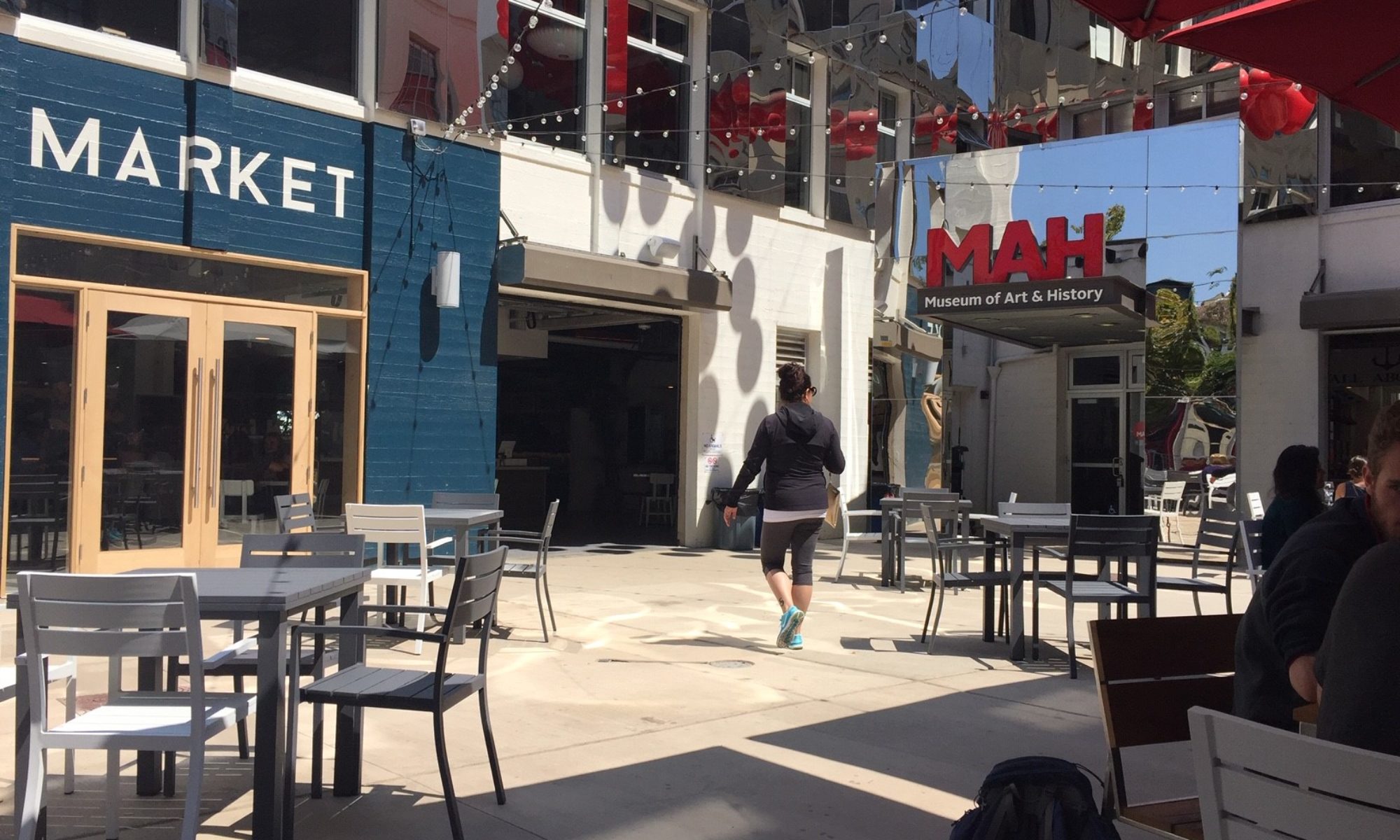Finding the relevance of Santa Cruz to Stockton on Tees

I first heard about Nina Simon’s book, The Art of Relevance, via a tweet from @ThinkinPractice. I was particularly drawn to reading it as we use the word ‘relevant’ to describe ARC’s artistic policy (‘to present work that is contemporary and relevant’). When I read the book, which explores how arts and cultural institutions can make their work relevant to their local communities, I felt like Nina had described everything we were trying to do at ARC – but articulated it much better than I ever had.
Nina is currently director of the Museum of Art and History (MAH) in Santa Cruz, California. In our first Skype conversation we talked a lot about creating change in our local communities, and also about the life cycles of our organisations – how at the beginning, you open up and see who comes; and then you start to notice who isn’t there, moving your time and resources towards those gaps. We were both at similar points in that life cycle and I was keen to learn more about Nina’s work at the MAH. At the time, they were in the process of co-curating an exhibition with foster youth, working through their Creative Community Committee structure. As ARC was in discussion with Stockton Borough Council about working with children in care, we were keen to benefit from their learning around this specific area of work.
Amongst other things, MAH run an annual leadership development programme called MuseumCamp. Nina suggested I should combine a visit to Santa Cruz with taking part in that programme, as the theme in 2017 was change-making. Reassured by the fact I wouldn’t have to stay in a tent (although some attendees did sleep in the museum itself!) I applied to take part and in August 2017, set off for a five day visit taking in time with staff working on the foster youth programme as well as MuseumCamp itself.
MuseumCamp is an international programme, with 60+ participants drawn from across the world – it would be hard to imagine a more diverse group. Although primarily aimed at leaders and emerging leaders within the museum and gallery sectors, there were a handful representing performing arts organisations. It was hugely refreshing to be amongst such a different group of people, and the format and facilitation of the camp made it incredibly easy to get to know each other and share experiences.
It was an incredible experience – to be the other side of the world, spending intense time with a group of people I’d never met before and yet, who very clearly and demonstrably shared my values. We were given the time, space and stimulus to think about making change in our local community.
I’m not very good at attending training courses, which I generally find too slow; or at attending conferences, which are generally too passive, so MuseumCamp was a perfect fit for me – fast, furious and activity-based. It was hugely invigorating, providing a mix of mental fertiliser and restorative power.
I took this strength and simmering thought back to ARC and it’s probably powered me through the last 12 months. Reflecting back, here are some of the things I took from it:
• A reminder of the value – as leaders, and change-makers – of spending time with people outside our own organisations and sectors
• How to recognize the different phases of change-making and maintain your energy throughout the process
• The importance of embracing failure as a positive thing: if you are trying to make change and some of the things you are doing aren’t failing, you probably aren’t trying enough new things
• How to grow the impact of your organisation without just doing more delivery
• How to think about scaling up as well as growing, through considering your ‘total addressable market’
• A great method of getting peer feedback in 30 mins (like I said, fast and furious…)
The work around co-curation – in this case with foster youth – was so valuable and inspiring that in December 2017, we arranged for ARC’s Programmes Manager and one of our Associate Artists to visit MAH themselves. Their experience, as well as mine, has helped inform our new programme of with children and young people in care in Stockton. Launched in April 2018, we have embedded many of MAH’s principles in the programme, More Stuff Like This Please, which in the first nine months, has achieved 85% of its engagement target for the entire two year programme.
The Art of Relevance is available here and you can also download MAH’s fabulous guide to creating community-driven exhibitions here.
Annabel Turpin, Chief Executive & Artistic Director, ARC Stockton
@annabelturpin
